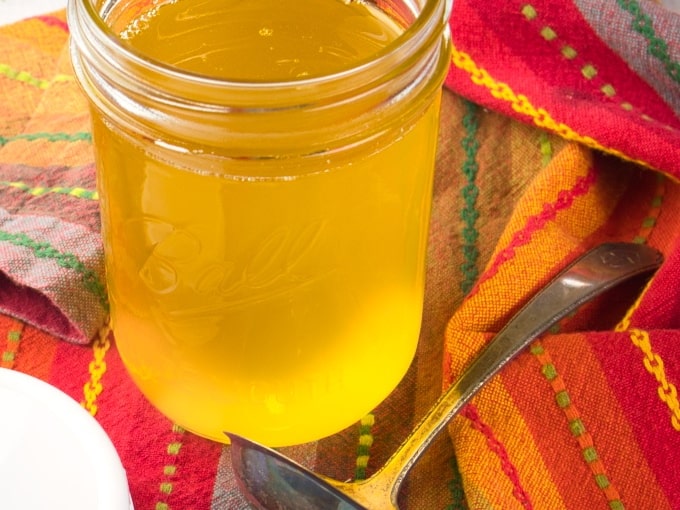
Jump to:
Liquid Gold
What a lovely treat to have homemade ghee on hand. With a smoke point of 485°F (251°C), it is the perfect vehicle for sautéing, stir-frying, roasting vegetables, and for use in any recipe you would normally use butter. It’s also the ideal starting point for tempering spices as a foundation for a curry. Yes, even for chocolate chip cookies, if like me, you get involved with another task and completely forget that you have something going on on the stove.
Ghee vs. Clarified Butter?
The difference between ghee and clarified butter is that ghee is cooked just a bit longer. Making ghee requires that you simmer the melted butter until the milk solids are starting to turn a light brown. Therefore, ghee has a richer, fuller flavor than clarified butter.
Making Ghee the First Time
The first time I made ghee I accidentally made “brown butter ghee.” I was so intent on filling the dishwasher and getting a handle on my kitchen clutter, that I completely forgot about the butter melting on the stove. Fortunately, my dear husband was passing by and noticed that the milk solids were turning a decidedly dark shade of brown. Just in time too. The clarified part of the butter was a medium brown, much darker than any ghee I’ve seen. However, after tasting it I found it was toasty, caramelized, and quite usable (for dessert, not regular cooking). After that unintended experiment, I started over.
Ghee For Health
Homemade ghee has been a traditional building block of flavor in Indian cooking for many centuries. Today, modern Indian cooks sometimes shy away from it because of health reasons, and may only use ghee in holiday cooking. According to the Ayurvedic guidelines though, ghee is considered a sacred and healing food. On the flip side of the health coin, in the U.S., there is a wave of interest in ghee by health-conscious eaters, looking for healthy fats. My health practitioner has narrowed down the fats she uses to organic coconut oil, avocado oil, and ghee. Having been a big butter lover all my life, this suits me just fine.
Buying Ghee
To satisfy those who want healthy ghee, but don’t want to go to the trouble of making your own, there are a growing number of small producers of specialty ghee. Touting variation on the grass-fed and cultured theme, and 4th & Heart even has Himalayan pink salt ghee. Pure Indian Foods is making a dozen varieties ghees now, including a Desi Ghee, and cultured ghee made from yogurt, which is good for those with dairy sensitivities. The widely distributed brand Organic Valley has organic ghee costs less than the high-end small-batch producers, but more than making ghee at home. You can feel quite smug after you go to the store and pick up a pound of organic butter for $4 to $5, and simply cook up your own golden, flavorful cooking medium.
Homemade Ghee vs. Buying
One of my favorite Indian bloggers (and now the author of the popular new cookbook “Season”) is Nik Sharma, and in the Washington Post he mentions ghee:
You don’t have to spend $17 on a bottle of ghee from a certain store. You can buy, like, four sticks of butter for maybe four bucks and make ghee in less than 10 minutes. And it lasts forever because the sugar is gone, the lactose is gone, the milk solids are gone, the water is gone, and you can actually leave it for more than a month outside the fridge and it will be fine.
—Nik Sharma
In India, traditional ghee making involves culturing the cream before churning it into butter. This adds aroma and tangy notes to the ghee and is called Desi Ghee, referring to being made in a traditional manner.
Happy cooking!
~Alonna
See the notes below before you cook.
Some Other Great Indian Condiments!
Recipe Card 📖
Easy Homemade Ghee
Instructions
- In a heavy bottomed pot, add butter and cook over medium-low heat at a low, gentle simmer.
- As the butter melts, there will be a layer of foam that covers the surface, which you do not need to skim off. Any remaining foam with be strained off at the end.
- The milk solids will start to brown and drop to the bottom. Do not walk away as the browning begins because the final cooking goes very quickly.
- Cook until the butter turns a deep golden color and the milk solids are a medium brown. Remove from the heat.
- Place a strainer over a heat proof bowl, line with cheesecloth or a coffee filter and strain.
- Let cool slightly.
- Then pour into a glass jar with a lid.
- You will have about 1 1/2 cups of ghee from a pound of butter. Store at room temperature or in the refrigerator. On the counter, your ghee will last about 3 months, if you still have any left by that time! Store in the freezer for up to 6 months.
Notes
- If you want to buy ghee, besides a local Indian grocery, it can be found at Whole Foods, Trader Joes, Pure Indian Foods for specialty ghee, health food stores, and very likely in your local grocery store.
- If you don’t have ghee, you can make a substitute by mixing half and half mix of butter and oil, which will give you a buttery taste, but also raise the smoke point so your butter won’t burn.
- Using salted butter to make ghee will create more foam when boiling, so if using in your homemade ghee, make sure that your pan is large enough to handle the increased volume.

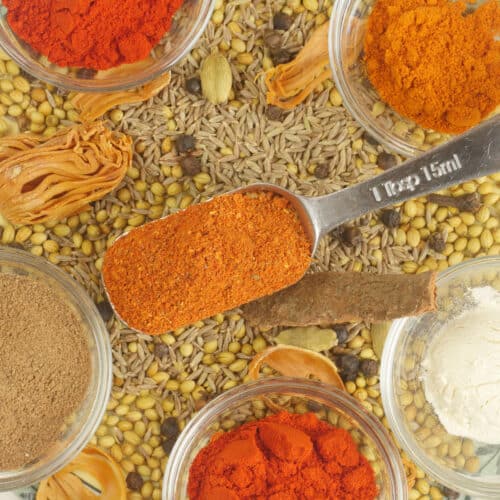
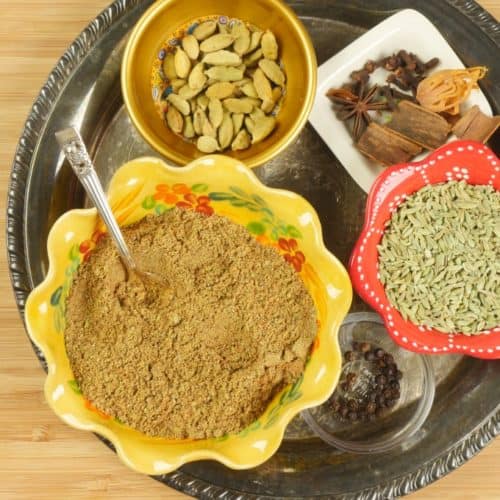
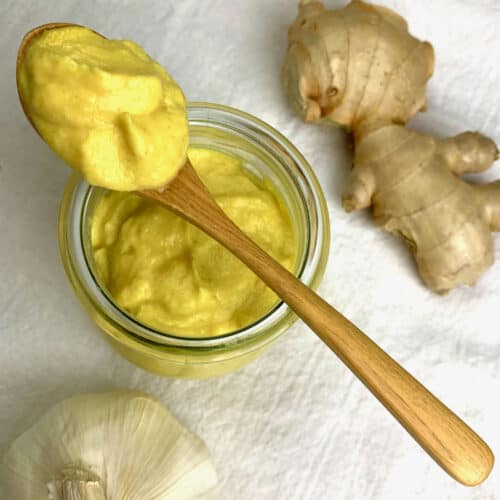
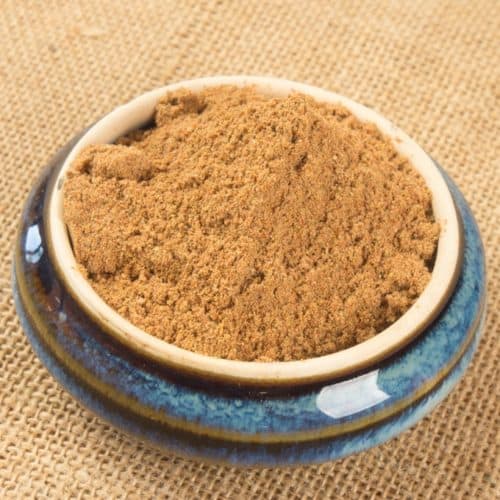
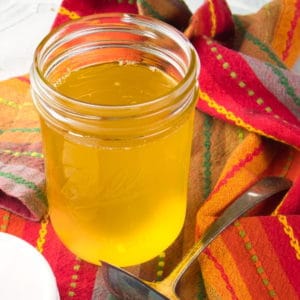
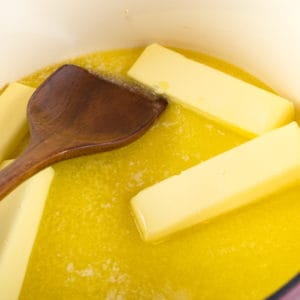
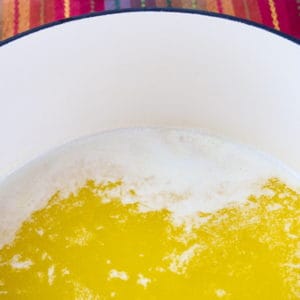
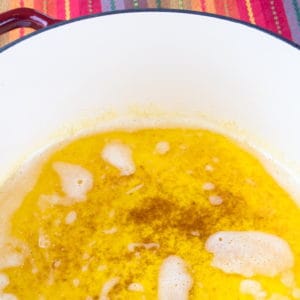
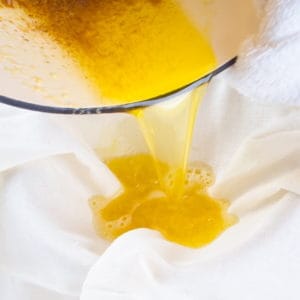
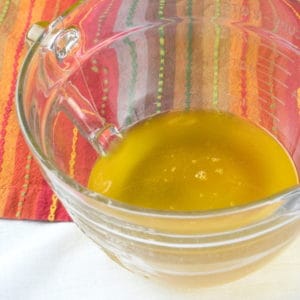
Leave a Reply